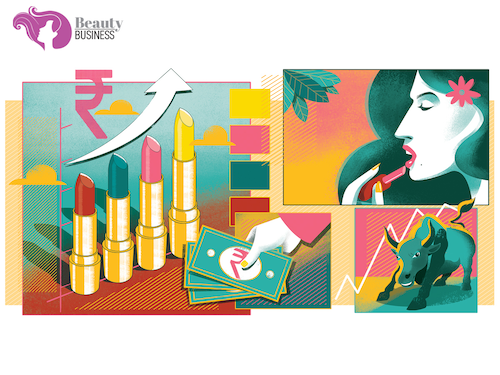Why decision making should be a combination of data and hunch
In the Indian context, due to the significant unorganised sector, neither the lipstick nor the underwear theory is likely to give a reasonable estimate of the economic situation


The lipstick effect is the theory that consumers will be more willing to buy less costly luxury goods when facing an economic crisis. Instead of purchasing expensive purses, for example, people buy expensive lipstick.
The Economist tested the lipstick effect in 2009 with statistical analysis, stating that “reliable historical figures on lipstick sales are hard to find, and most lipstick believers can only point to isolated, anecdotal examples as evidence of the more significant phenomenon".
Data collected by Kline & Company, a market research group, shows that lipstick sales sometimes increase during economic distress but have also been known to grow during periods of prosperity. In other words, there is no clear corelation between buying patterns and distress.
Alan Greenspan used the men’s underwear index to detect the beginnings of a recovery during an economic slump. The premise is that men’s underwear is necessary in regular economic times, and sales remain stable. During a severe downturn, new purchases are deferred. It is considered a good indicator of discretionary spending at large, especially during turnaround periods.
It is unknown if other Fed chairpersons use this index to estimate economic recovery.
Many people remember Jeff Bezos’s statement: “When the data and the anecdotes disagree, the anecdotes are usually right."
However, most forget the second part: “And it doesn’t mean you just slavishly follow the anecdotes, then. It means you examine the data because it’s usually not that the data is being miscollected it’s usually that you’re not measuring the right thing."
Data doesn’t lie. Hunch or gut feel is a legitimate tool. Many times, they will be at loggerheads. What is needed is a reconciliation between the two.
The Indian economy is doing well as it has moved from being the 12th largest in 2010 to the fifth largest economy in 2024. We are on the way to becoming the third largest well before the end of this decade. We have never moved up so fast and high in the global economic order post brutal colonisation. Despite accelerated economic growth, we provide free food to 80 crore Indians. Our challenge is inequal growth. About 13 districts of India around metros contribute half of India’s GDP. The other half is spread over 692 districts.
India is a country of 144 crore Indians. The smallest state, Goa, is as small as Equatorial Guinea in population, and the largest state, Uttar Pradesh, is as big as Brazil and Ecuador put together in population. One of the richest, Delhi, is as rich as North Macedonia in per capita GDP, and the poorest state, Bihar, is as poor as sub-Saharan African nations.
In the Indian context, due to the significant unorganised sector, neither the lipstick nor the underwear theory is likely to give a reasonable estimate of the economic situation. Maybe we will have to devise something new.
We devised the United Payment Interface when no one else thought about it. We are on T=0 settlement in equity markets when no one else is.
I recently attended a programme of the Ministry of Statistics and programme implementation in Mumbai and was happy to see their stellar work in providing economic data and proposals to improve data collection and analytics further.
That is the way forward for India.
The writer is MD, Kotak Mahindra AMC
First Published: Jan 02, 2025, 11:14
Subscribe Now